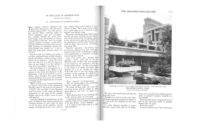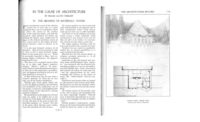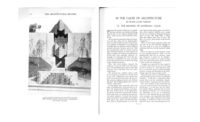This book is so petite and whimsical-looking you could easily mistake it for “bookshop candy”—those cutesy, little tomes perched around cash registers—but don’t be fooled. While this rambling meditation on the significance of home mixes plenty of wit and surprising factoids with occasional clichés, it also draws on such heavy-hitting intellectuals as Ludwig Wittgenstein, Walter Benjamin, Carl Jung, Ingmar Bergman, and Gaston Bachelard.

The Meaning of Home grew from a series of essays its author, British journalist Edwin Heathcote, wrote as the Financial Times’ architecture critic, a position he has held since 1999. Expanding on those pieces, each of the 34 brief chapters focuses on an individual household room (front hall, living room, kitchen, bathroom, and so forth) or a discrete building component, (floor, ceiling, roof, or even, as he puts it, “Pipes, Wires & Sewers”).
The essays are densely packed potpourris of observations and curiosities, delivered in an almost stream-of-consciousness narrative, drawing on tidbits of history (ancient to modern), word derivations, folklore, mythology, philosophy, architectural innovation, scientific research, symbols, rituals, and literature, plus cinema and other niches of popular culture. A typical paragraph can run the gamut from Freudian interpretation to a jaunt through the Victoria & Albert Museum to Medieval and Renaissance fetishes to high-tech iris-recognition devices.
Many of the ideas are engaging, even fascinating, though some rooms get far more interesting play than others—and certain observations (such as the notion that traditional cellars in legend, movies, and real life are often dark, dank, creepy places, harboring unknowns) really state the obvious.
Heathcote can also overwork a point or over-read symbolic meaning. Do we really need to hear once—or more than once—that putting a key into a lock is like an act of sexual penetration? Hey, isn’t a cigar sometimes just a cigar, or a key just a key?
Also, certain claims sound so academic, or hard to believe, they almost beg footnotes. Yet it’s reassuring that the seemingly far-fetched etymological references check out: The word “hall,” for example, really does derive from the same Old English origin as “hell.”
But the twice-repeated suggestion that Americans typically occupy spanking-new houses, often as the first tenants, belongs in the realm of off-the-cuff misperception presented as fact.
It’s also curious that The Meaning of Home, despite its visual focus, contains no images. Intriguing photos could have enriched the conversation.
Nonetheless what comes across overall is how passionately Heathcote has reconsidered the home—how broadly he has read and observed, and how fearlessly he delves into the ongoing saga of how we live.
Sarah Amelar is a contributing editor to ARCHITECTURAL RECORD.






Post a comment to this article
Report Abusive Comment